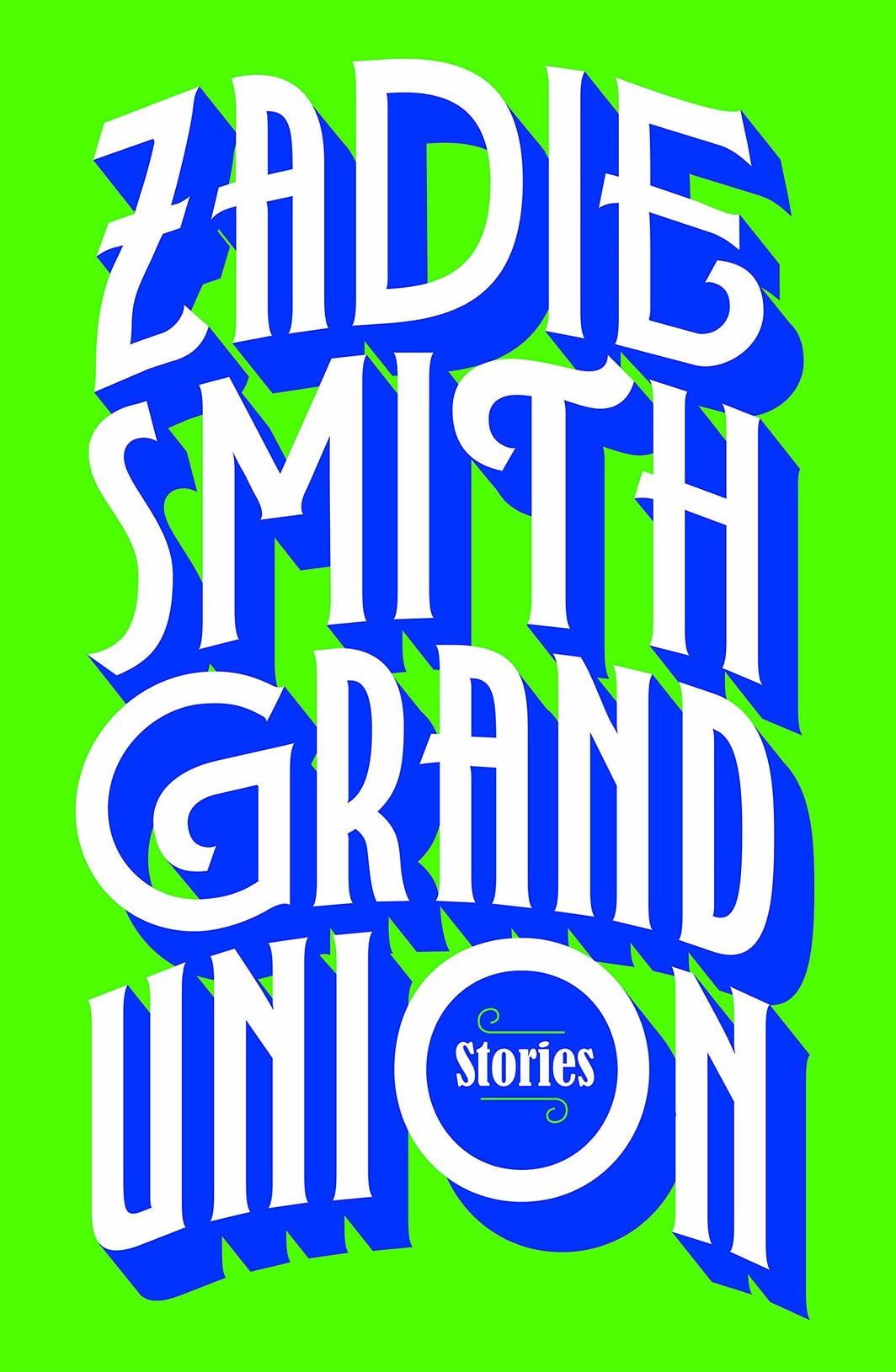
The erstwhile wunderkind has been coping with the onset of middle age for four books now. The novels NW (2012) and Swing Time (2016) were about the ways youth slips away, among other things: friendship, neighborhood loyalties, class, celebrity, violence, inequality, biracial identity, sex, the internet, Africa, England, and how to write a novel when realism is anxious about its own survival. The essays in Feel Free (2018) and now the stories in Grand Union have taken in parenthood, the passing of the older generation, unexpected political upheavals, unwelcome physical transformations, and the arrival of a strange species: people in their twenties. It’s worth remembering that Zadie Smith fell to earth in her twenties, author of White Teeth—a baggy comic novel to do with bioengineering, Jehovah’s Witnesses, and a Muslim fundamentalist sect called KEVIN—brandishing as her influences Martin Amis, Salman Rushdie, and David Foster Wallace. She is a child of the 1990s, when quality anglophone fiction was ironic and funny, before it became about how most people are sad and some people are bad.
It’s striking how far many novelists of Smith’s generation have veered away from the dizzying, wide-canvas, broadly satirical, knowing fictions of their youth. (Now if you want to read a Pynchonesque novel, you have to wait for one written by Thomas Pynchon himself.) Smith discovered E. M. Forster, then Virginia Woolf, then wrote a novel with a narrator who was determinedly unironic despite holding a job as personal assistant to a pop star resembling a combination of Kylie Minogue and Madonna, a situation ripe for the hysterical-realist treatment, to use James Wood’s term. Her recent writings have a melancholy register. Despite its title—note the imperative mood of Feel Free—her last essay collection was pervaded by an aura of dutifulness. There’s a greater sense of liberation in the stories that make up Grand Union. Without having to generate the narrative thrust to sustain a novel or to make an argument she’ll have to attach her name to, Smith tinkers with ideas, adopts disparate modes of storytelling, and pursues various larks.
Of the nineteen stories in Grand Union, eight have appeared in Granta, the New Yorker, or the Paris Review since 2013, and eleven are original to this volume. Missing are a few of Smith’s earliest efforts at short fiction, as well as one of her most memorable pieces of writing, “The Embassy of Cambodia,” told from the point of view of a migrant from Ivory Coast working as a domestic slave in London, and published as a short book in the UK in 2013. So Grand Union isn’t a career-spanning volume capturing a dedicated novelist’s occasional forays into the short form, like Don DeLillo’s The Angel Esmeralda.
The best of these stories have a loose, diaristic quality, mixing the personal and political. Since the politics of Smith’s two homes—London and Manhattan—haven’t exactly been inspiring of late, there’s a general tone of comic resignation. Brexit, 9/11, Trump, Obama, cancel culture, Brett Kavanaugh, the opioid epidemic, gendered pronouns, and migration are all treated at variable degrees of conceptual and dramatic density.

One of Grand Union’s few straightforward narratives offers its purest pleasures. “Sentimental Education” is of a piece with Smith’s recent novels: sex, betrayal, MDMA, and racial misunderstanding among North Londoners displaced by meritocracy to a fancy provincial university in the 1990s, as recalled from the not untroubled perspective of parenthood and middle age. It’s the sort of story that’s almost too easy for Smith. There’s a striking dream described at the story’s end, of a pool full of beautiful young men with skin pouches at their crotches; the narrator has a knife in her pocket that she’ll use to cut the pouches open. It’s ambiguous what her dream-self means to do once the pouches are sliced. The collection’s most successful formal experiment is “The Lazy River,” an abstracted evocation (the narration switches between first-person singular and plural, but the narrator’s place within the collective isn’t specified) of Britons in the “non-judgment zone” of an all-inclusive resort (and its tranquilizing pool) in the south of Spain after the referendum: “most of us voted for Brexit and therefore cannot be sure if we will need a complicated visa to enter the Lazy River come next summer. This is something we will worry about next summer. Among us, there are a few souls from London, university educated and fond of things like metaphors and remaining in Europe and swimming against the current. Whenever this notable minority is not in the Lazy River, they warn their children off the endless chips and apply the highest-possible factor of suncream.” A meticulous anatomy of a tourist trap becomes an index of class distinctions that extends to the resort’s staff, a pair of whom are glimpsed in the last scene cleaning “whatever scum we have left of ourselves” off the sides of the pool.
Grand Union is Smith’s best book since NW, but there are a few misfires, stories that never transcend their premises. “Escape from New York,” her imagining of Marlon Brando, Liz Taylor, and Michael Jackson fleeing the city together on 9/11, is a forgettable stunt. “Meet the President!” is one of those forays into speculative fiction literary writers tend to make in the pages of the New Yorker when they’ve been reading too much George Saunders. Futuristic elements (in this case a virtual reality game) are juxtaposed with human interactions (here a poor person’s funeral) in a dystopian setting, resulting in convolutions that aren’t very satisfying to parse. “Big Week” is a portrait of a former Boston cop whose life has fallen apart (fired from his job, divorcing, excluded from charity work) thanks to an opium habit and a scandal resulting from his lifting $30 from an inmate’s wallet. This ex-cop is merely maudlin, like a flat character on a bad TV show. A shift in point of view to the ex-cop’s ex-wife in the last scene doesn’t quite save the story.
A much (much) better example of fictional portraiture is the trans woman in “Miss Adele Amidst the Corsets.” She’s spiky, exasperated, adjusting to the new contours of her aging body: “she was thickening and sagging, in all the same ways, in all the same places, as her father,” but in “the clothes of a middle-aged woman, she began to notice this new feeling of affinity toward them, far deeper than she had ever felt for young women, back when she could still fit into the hot-pants of a showgirl.” The story turns on a botched interaction with the Russian-immigrant owner of a Lower East Side corset emporium over his misgendering her: “First up, I ain’t no sir—you live in this city, use the right words for the right shit, okay?” The voice and tone are just right, even if the narrative hinge, post–Jordan Peterson, is already a bit dated (the story first appeared in 2014). “Miss Adele” is one of several stories set in downtown Manhattan that form the core of Grand Union. Smith’s fondness for her neighborhood is emphatic if not quite contagious. Hers is the downtown of Café Loup and Film Forum, which isn’t everybody’s downtown, but everybody shows up on Bleecker Street and in Washington Square Park: the hipsters, the homeless, the buskers, the children, the chess players. It’s a yuppie paradise with enough of the old flavor around in the presence of aging punks walking their dogs to charm middle-aged academic parents (like Smith’s alter egos) who weren’t around during the CBGB era, before the Bowery was a graveyard of bank branches, gyms, and nondescript dormitories. Then there is the invisible neighborhood of the internet, a far less hospitable place. It intrudes on Smith’s fictions in literal and allegorical fashion, mostly to very clever if dreary effect.
You probably read “Now More Than Ever” when it appeared in the New Yorker in July 2018. I’ve heard it referred to by a few readers as “the story with the signs” or “the one about Kanye.” The signs are an absurdist rendition of social-media shaming: Everyone in the narrator’s tower apartment building has put signs in their windows, signs with black arrows pointed at other residents. This is done throughout the city, though in the narrator’s case her building is filled with her colleagues from a university philosophy department. Until the story’s last line, Smith refrains from invoking current lingo for the new morality. She describes it instead using images of puppets, the signs, a lengthy reading of the 1951 melodrama A Place in the Sun, and a cryptic exchange of emails with a midwestern high school student. Obliqueness is an effective strategy because it’s funny and absurd and because it allows the author and her narrator to avoid taking any stands on real-life issues where the wrong opinion might cause readers to try to cancel them. In any case the strategy isn’t that oblique. As the high school student tells Smith’s narrator, her metaphors are obvious. But in the end it doesn’t matter. The narrator, who insists on degrees of guilt and degrees of sympathy, is told by her young friend that that’s no longer the case: “You’re two-faced, you’re looking the wrong way, and if you don’t watch out you’re going to find yourself beyond the pale.” Cancellation is what happens to the narrator in the story’s last line, after she has defended the right of Kanye West to say what he likes and then he goes and says that he’s glad Trump is in power. Of course, she doesn’t name either of them. That would be no fun. Smith has had her own brushes with online backlash, notably after her essay on the controversies surrounding the 2017 Whitney Biennial, in which she compared calls for the destruction of Dana Schutz’s painting Open Casket—which depicted Emmett Till’s corpse—with Nazism. “Now More Than Ever,” with the distance of its narrator, its playful tone, and its allegorical games, heralds the sort of fiction we’re likely to be seeing more of in an age that doesn’t particularly cherish realist treatments of ambiguity. It’s time for hysterical realism to return from beyond the pale.
Christian Lorentzen is a writer in Brooklyn.

